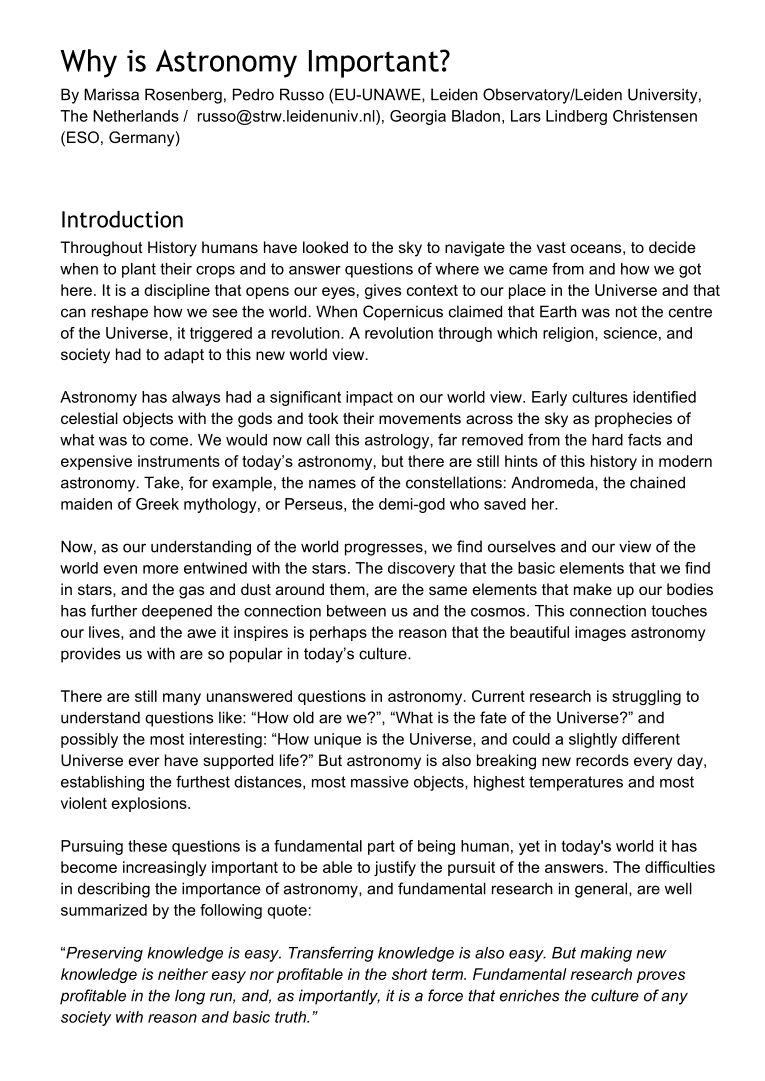On numerous occasions, when gazing up at the nighttime sky, we have pondered – what lies within this boundless expanse?
The cosmos hides numerous enigmas and puzzles, but there exists a scientific field known as astronomy, which has dedicated itself to investigating the universe and unraveling its beginnings. So, what exactly is this discipline? What tasks do astronomers undertake and what specific areas do they explore?
What is the meaning of the word “astronomy”?
The term “astronomy” originated in ancient Greece during the III-II centuries BC, when prominent scientists like Pythagoras and Hipparchus made significant contributions to the field. This word is a combination of two ancient Greek words – ἀστήρ (star) and νόμος (law), signifying that astronomy is the law governing the stars.
It is important not to confuse this term with astrology, which focuses on the study of how celestial bodies affect the Earth and humans.
What does astronomy involve?
Astronomy is a field of study that focuses on understanding the universe, including the positioning, composition, and origins of celestial bodies. In contemporary times, it encompasses various branches:
– Astrometry: the study of the positions and movements of cosmic objects;

– Celestial mechanics – involves determining the mass and shape of stars, investigating the laws governing their motion under the influence of gravitational forces;
– Theoretical astronomy, on the other hand, focuses on the development of analytical and computer models to study celestial bodies and phenomena;
– Astrophysics, on the other hand, delves into the chemical and physical properties of objects in space.
Different branches of science are dedicated to studying the spatial arrangement of stars and planets, as well as the evolution of celestial bodies.
In the 20th century, a new field called archaeoastronomy emerged in the field of astronomy, which aims to study the astronomical history and enhance our understanding of ancient knowledge about stars.

The field of astronomy encompasses the entirety of the universe and its various components, such as stars, planets, asteroids, comets, galaxies, and constellations. Scientists who specialize in this area investigate a wide range of topics, including interplanetary and interstellar matter, the measurement of time, black holes, nebulae, and celestial coordinate systems. Put simply, astronomy encompasses all aspects of the cosmos and its evolution, including the study of astronomical instruments, symbols, and more.
When was astronomy first practiced?
Astronomy, one of the oldest scientific disciplines, has a history that dates back thousands of years. While it is impossible to pinpoint the exact moment it came into being, it is well known that people have been observing the stars since at least the 6th to 4th millennia BC.
Throughout history, many ancient civilizations, such as the Babylonians, Maya tribes, Ancient Egyptians, and Ancient Chinese, have left behind astronomical tables and calendars. The Ancient Greeks also made significant contributions to the field, with figures like Pythagoras proposing that the Earth is a sphere and Aristarchus of Samos drawing conclusions about its orbit around the Sun.
For a considerable period of time, astronomy and astrology were closely linked, but with the advent of the Renaissance, astronomy emerged as an independent field of study. The invention of telescopes played a crucial role in enabling scientists to explore and understand the Milky Way galaxy, and by the early 20th century, they had come to realize that the universe is composed of numerous galactic realms.
One of the most significant breakthroughs in modern times has been the development of the theory of the universe’s evolution, which posits that it expands over time.
What does amateur astronomy entail?
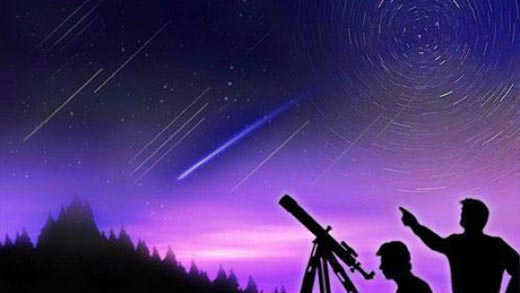
Amateur stargazing is a pastime in which individuals who are not affiliated with scientific or research institutions engage in observing celestial objects. It is worth mentioning that this form of entertainment greatly contributes to the advancement of astronomy as a whole.
Amateur astronomers have made numerous fascinating and significant discoveries. For instance, in 1877, the Russian observer Evgraf Bykhanov was the first to propose modern theories on the formation of the solar system, while in 2009, Australian astronomer Anthony Wesley detected evidence of a celestial body (potentially a comet) colliding with the planet Jupiter.
This ancient field of study emerged to assist individuals in navigating through time and space (leading to the creation of calendars, maps, and navigation devices based on astronomical knowledge), as well as predicting various natural phenomena that are in some way connected to the movements of celestial bodies. Contemporary astronomy encompasses several branches.
Spherical astronomy, utilizing mathematical techniques, investigates the apparent positions and movements of the Sun, Moon, stars, planets, and satellites, including man-made objects, on the celestial sphere. This branch of astronomy is closely linked to the development of the theoretical principles behind time measurement.
Practical astronomy refers to the understanding of astronomical instruments and techniques for determining time, geographic coordinates, and directional azimuths through observing celestial objects. Its main purpose is to serve practical needs and can be categorized into three types based on its application in different domains (in the sky, on land, or at sea): aeronautical, geodetic, and nautical.
Astrophysics focuses on studying the physical properties and chemical compositions of celestial bodies and their systems, as well as the interstellar and intergalactic environments and the processes that occur within them. It is a branch of astronomy and can be further divided into various subfields based on the specific objects of study, such as planetary physics, natural satellites of planets, solar physics, interstellar medium, stellar atmospheres, internal structure and evolution of stars, and interstellar medium, among others.
Astrometry is a branch of astronomy that focuses on the measurement of celestial object coordinates and the study of Earth’s rotation.
Stellar astronomy examines stellar systems such as clusters and galaxies, investigating their composition, structure, dynamics, and evolution.
Extragalactic astronomy explores celestial objects beyond our own galaxy, including other galaxies, quasars, and distant entities.
Cosmogony examines the origin and development of cosmic bodies and their systems, including the solar system, planets, stars, and galaxies.
Cosmology focuses on the study of the physical properties of the entire universe, drawing conclusions from observations and studies of the observable portion of the universe.
Astrology does not analyze any of the aforementioned subjects, and the majority of astronomical information is entirely irrelevant for an astrologer. An astronomer also has no necessity to comprehend astrology, and even less to engage in discussions regarding this subject, as it falls outside of their interests and expertise. However, there is a spot for astronomy on the astrological webpage. It will encompass the essential basic astronomical facts that an astrologer cannot go without, as well as any information that might captivate any individual who possesses an interest in astrology.
The field of study that explores the cosmos and is among the most ancient in human history is called astronomy. This term is derived from two Greek words: “nomos” meaning “law”, and “astron” meaning “celestial body, star”. When combined, the phrase can be interpreted as “law of the stars”. Astronomy encompasses thousands of years of sky observation, during which a diverse range of knowledge has been amassed. It is worth mentioning that, even in ancient times, this discipline was remarkably advanced compared to other fields of study.
Then and now
The names of constellations have remained the same for countless centuries. Our ancestors from long ago were familiar with all of them and had the ability to determine the sunrise and sunset times for the Sun, planets, Moon, and the brightest stars long before our time. Additionally, scientists of that era were already capable of forecasting solar and lunar eclipses. Astronomy played a vital role in the lives of ancient humans. Hunters relied on the stars to navigate their way back home, while sailors used them as guides in the vast ocean. All agricultural activities were tied to the established cycle of seasons, and time was measured by celestial bodies, resulting in the creation of calendars. Even astrologers predicted destinies based on the positions of stars.

Two branches of astronomy
Ancient astronomy primarily relied on observation as its essential method. Unlike physics or chemistry, which can rely on experiments, astronomy is limited by the inaccessibility of its subjects of study. However, the significance of astronomy in human life remains substantial even today. The knowledge about celestial bodies is primarily obtained from electromagnetic radiation. Nonetheless, recent advancements have allowed scientists to directly study certain celestial objects. Automated stations now probe the atmosphere and examine the soil of nearby planets.
Astronomy is divided into two main parts, theoretical and observational, due to the fact that observations of celestial bodies provide data that is then analyzed using the principles of physics. Theoretical astronomers, on the other hand, utilize computer models, mathematical equations, and analytical tools to describe astronomical phenomena and objects. The significance of astronomy as a scientific field cannot be overstated, as these two branches are interdependent and work in tandem. Theories are developed based on observation results, and observers validate or refute hypotheses and theoretical conclusions.
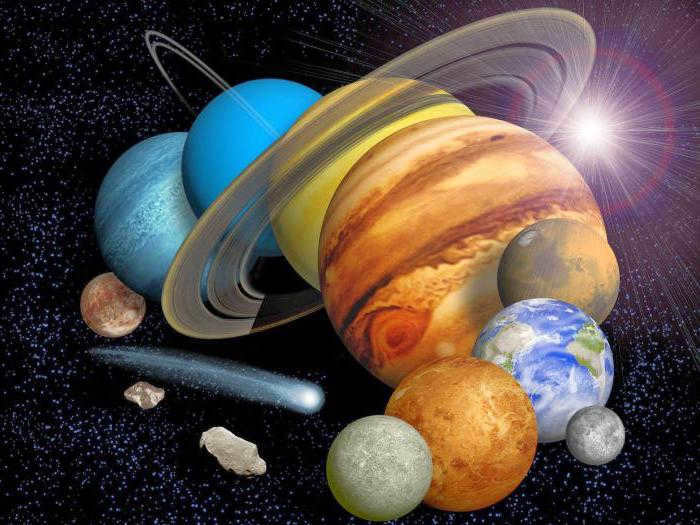
Astronomy: A Philosophical Science
The concept of the discipline known as “astronomy” originated in ancient times and continues to thrive today. It involves the exploration of the fundamental laws that govern the nature of our world, while also delving into the broader cosmos. As a result, astronomy was initially regarded as a philosophical science. By studying celestial objects such as stars, planets, comets, and galaxies, as well as phenomena that occur beyond Earth’s atmosphere – such as the radiance of the Sun, solar wind, and cosmic radiation – we gain insights into our own planet.
The same principle applies to the word “astronomy” itself, as it encompasses the universal laws that govern both the stars and our own planet. Earth is intricately connected to the vast cosmos, and its development follows the same fundamental laws. These laws have given rise to disciplines such as evolution, physics, chemistry, and meteorology, which have greatly benefited humanity. The progression of the world is intrinsically tied to the movements of celestial bodies, from the formation and evolution of galaxies to the life and rebirth of stars. It is crucial to recognize the origins of all scientific knowledge, and it is unfortunate that astronomy has been overlooked in educational curricula. There is no substitute for the knowledge and understanding it provides, allowing us to comprehend the vastness and significance of our universe.

The 20th Century: Advancements in Astronomy
During the 20th century, the field of astronomy witnessed significant progress as it transitioned into a professional science. New tools and instruments were continuously developed to study the vast cosmos, complementing the age-old invention of the telescope. These instruments allowed for the collection and processing of vast amounts of information, which theoretical astrophysicists used to construct analytical and computer models.
The field of astronomy has had a profound impact on various branches of human science. Notably, the famous theory of relativity is built upon the fundamental laws of astronomical physics. Interestingly, many of the groundbreaking discoveries in this field are made by amateur astronomers. Astronomy stands out as one of the few scientific disciplines where individuals outside the professional community can actively participate in observations and contribute valuable data.
Astronomy and Astrology
Modern students often mix up science and belief systems, mainly because there is a lack of proper education on this topic in schools. Astrology has been widely regarded as a pseudoscience, asserting that every human activity, no matter how small, is influenced by the position of celestial bodies. Although both fields share a common origin, their cognitive frameworks are fundamentally different.
However, thanks to astronomy, mankind has taken a great leap forward in comprehending the laws of the cosmos. This field of study remains an enigma, with an endless array of unanswered questions far outnumbering those that have been resolved. No matter the number of space and terrestrial instruments devised, no matter the magnitude of groundbreaking discoveries, they merely scratch the surface of our vast knowledge. Presently, we are still unable to definitively discern the origins of stellar mass across its entire spectrum, nor can we definitively confirm or refute the existence of extraterrestrial life. The Fermi paradox remains unresolved, and the true nature of darkness eludes us. The duration of the universe’s existence and its specific purpose remain shrouded in mystery.

The Significance of Astronomy in History
In ancient times, astronomers were able to differentiate between stars and planets, and they associated this knowledge with the divine, attributing spiritual and godly qualities to all celestial bodies. This led to the emergence of astrology, a branch of science that linked the movements of cosmic objects to earthly phenomena such as seasons, rainfall, and droughts.
As a result, wise individuals, such as priests and cult workers, were regarded as professional astronomers. Many ancient structures, like Chinese temples and Stonehenge, served dual purposes – both astronomical and religious.
So many achievements have been made that it is possible that ancient knowledge laid the groundwork for much of the science that thrives today. The creation of calendars was based on the movement of celestial bodies – the ancient Roman calendar is still in use today. China had an operational astronomical observatory as early as 2300 BC, as shown in the photo.
Chinese oracles have preserved drawings of eclipses and the emergence of new stars for over four thousand years. Detailed astronomical observations have been recorded in China since the sixth century BC. In contrast, the astronomical boom in Europe did not begin until the seventeenth century AD. For thousands of years, the Chinese have accurately predicted the appearance of comets. The first star atlas was created in China approximately six thousand years ago.

Ancient Greece and the Arab world
The progress of scientific knowledge in Europe during the Middle Ages came to a complete halt, disregarding the significant contributions made by the Greeks in the field of astronomy. These valuable discoveries were condemned and as a result, only a limited number of summarized records and compilations from classical antiquity have managed to survive until today.
However, astronomy thrived in Arab nations, and the clergy of the most remote Christian parishes two millennia ago were capable of calculating the precise date of Easter based on the movements of the celestial bodies. The Arabs translated numerous works of ancient Greek astronomers, and it was there that future generations discovered these manuscripts in the depths of surviving libraries. Observatories were constructed in Arab nations as early as the 9th century AD. In Persia, the poet and scientist Omar Khayyam meticulously compared a vast array of tables and reformed the calendar, resulting in a more accurate version than the Julian calendar and closer to the Gregorian calendar. His constant observations of celestial bodies played a crucial role in this endeavor.
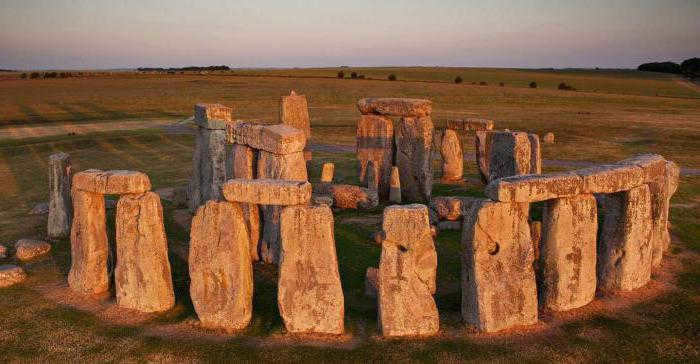
Understanding Celestial Mechanics
Isaac Newton introduced the concept of universal gravity to the world. Nowadays, most people only associate his name with the three laws of physics. However, what many fail to realize is that these laws are closely intertwined with the study of celestial mechanics, a subject that is unfortunately not taught in schools.
→ What does astronomy entail?
When we gaze up at the sparkling night sky on a balmy summer evening, we are often filled with curiosity about the mysteries it holds. How is everything organized? What lies beyond our reach? These contemplations on the fragility of our earthly existence and the vastness of the cosmos evoke thoughts of grandeur and minuteness, as we imagine the sky as black velvet and stars as drops of milk. However, scientists approach the starry sky with a different mindset, seeking to unravel its secrets. Their research continually astounds us with new discoveries. So, what exactly is the purpose and significance of the science of astronomy?
What is the focus of Astronomy?
Astronomy is a branch of science that focuses on exploring the structure of the cosmos. It investigates the position, movement, physical characteristics, origin, and development of celestial bodies and systems. Additionally, astronomy delves into the fundamental properties of the vast universe surrounding us. Specifically, it examines the Sun, stars, planets and their moons, black holes, galaxies, nebulae, quasars, asteroids, and more. The purpose of astronomy is to unravel the enigmatic phenomena occurring in the Universe and shed light on our existence.
What was the origin of Astronomy?
Astronomy can be traced back to the time when humans first started pondering the structure of our world. Initially, ideas about the universe were rooted in religion, but as early as the 6th or 4th century BC, people began studying the stars and their movements. As mathematical and physical knowledge advanced, so did our understanding of the universe. A major breakthrough occurred around 1500 BC with the advent of spherical astronomy, precise calendars, and astrometry. The Babylonian priests, the Mayan calendars, and the knowledge passed down from Ancient China and Egypt all played a role in shaping the early foundations of astronomy. It was the ancient Greek scientists, particularly Pythagoras and Aristarchus of Samos, who first proposed that the Earth was spherical and revolved around something. This period also saw the emergence of the geocentric theory of the world. Galileo made significant contributions to the field of astronomy during this time.

Astronomy and astronautics have long captivated the attention of countless individuals. The global community of amateur astronomers is so vast that it is impossible to quantify, and it is often thanks to their efforts that numerous astronomical breakthroughs have been made. For instance, in 2009, Anthony Wesley from Australia, while observing Jupiter, stumbled upon evidence of a celestial object’s impact on the planet, possibly a comet.
Astronomy allows us to uncover the laws of nature and witness the gradual evolution of our universe. It plays a crucial role in shaping people’s worldview. In the early 21st century, space-related topics, including extraterrestrial life, have gained popularity. Unfortunately, many discussions on these subjects are often misguided, lacking proper expertise. The interest of uninformed journalists and the propagation of unverified claims by some scientists have led many individuals to believe in pseudoscientific discoveries.
Nowadays, there is a vast array of high-quality scientific videos available that explore the vastness of space, showcasing different stars, planets, and galaxies. These videos employ stunning graphics and real footage captured from space, offering a mesmerizing experience that is sure to captivate and enhance one’s understanding of the fascinating field of astronomy. Below, you can find a selection of these captivating films.
Astronomy is a scientific discipline that delves into the motion, structure, origin, and evolution of celestial bodies and their interconnected systems. The knowledge accumulated in this field is not only theoretical but also applicable to meeting the practical needs of humanity.
Astronomy is one of the oldest scientific disciplines, tracing its roots back to the practical needs of ancient civilizations. Thousands of years ago, civilizations such as Babylon, Egypt, and China possessed elementary astronomical knowledge, which they utilized for timekeeping and navigation purposes.
Nowadays, astronomy is utilized for determining precise time and geographical coordinates in various fields such as navigation, aviation, astronautics, geodesy, and cartography. It plays a crucial role in exploring and advancing space exploration, astronautics, and the study of our planet from a cosmic perspective. However, the scope of its applications extends beyond these tasks.
Our planet Earth is an integral part of the vast Universe. The Moon and the Sun exert their influence on our planet, causing tides. Solar radiation and its fluctuations impact the Earth’s atmosphere and the biological processes of organisms. Astronomy also investigates the mechanisms by which different celestial bodies affect our planet.
The field of modern astronomy is intricately linked to various disciplines such as mathematics, physics, biology, chemistry, geography, geology, and astronautics. By harnessing the advancements made in these sciences, astronomy not only enhances them but also stimulates their progress by presenting new challenges. Unlike laboratories, astronomy investigates matter in space, examining states and scales that are otherwise unattainable. As a result, it expands our understanding of the physical universe and enriches our knowledge of matter. These contributions are vital for the development of a dialectical-materialist perspective on nature, enabling us to predict phenomena like solar and lunar eclipses, as well as the appearance of comets. Furthermore, astronomy has played a crucial role in combating religious prejudices by offering natural-scientific explanations for the origins and transformations of celestial bodies. In doing so, it has made significant contributions to the advancement of Marxist philosophy.
When delving into the realm of astronomy, it becomes imperative to discern between established facts and scientific assumptions, which are subject to evolution over time. The crux lies in the boundlessness of human knowledge. Allow me to illustrate this point through a compelling anecdote.
In the previous century, a philosopher with idealistic views dared to make a claim that the cognitive abilities of humans were limited. The philosopher argued that although humans had the capability to measure the distances to certain celestial bodies, they would never possess the ability to determine the chemical composition of stars. However, this claim was soon proven false with the discovery of spectral analysis. Astronomers were able to not only establish the chemical composition of star atmospheres but also determine their temperature. Many other attempts to define the boundaries of human cognition were also unsuccessful. As a result, scientists were able to first estimate the temperature on the Moon through theoretical means, then measure it using thermocouples and radio methods from Earth, and finally confirm these measurements through the instruments of automated stations that were constructed and sent to the Moon by humans.
Feel free to share this article with your acquaintances:
Clearly, both astrology and astronomy are connected to celestial bodies that exist in the vastness of outer space. This brings these two concepts together. However, what exactly do each of them mean and what sets astrology and astronomy apart? Let’s delve into these questions.
Definitions
Astrology – The field that examines the influence of celestial objects on individuals and their destinies. The history of the development of this discipline dates back to ancient times. Initially, celestial bodies were associated with mythological gods who governed the world.
Astronomy – The scientific study of the universe and the cosmic bodies within it. There are two interconnected branches of astronomy: observational (which gathers data about celestial objects) and theoretical (which focuses on formulating various hypotheses and drawing conclusions).
Comparison
Allow us to outline the primary factors that set things apart.
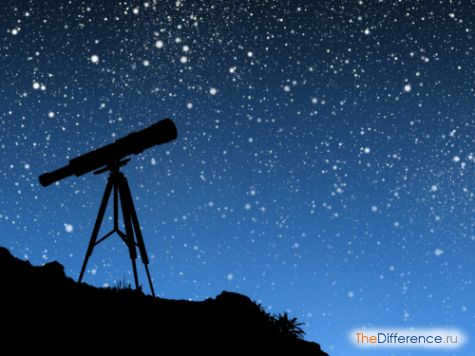
Area of Focus
Astronomy is primarily concerned with examining the relationship between the celestial realm and humanity. The field of study proposes the concept that the entire universe operates as a unified system, with all parts adhering to the same laws. Consequently, the movements of celestial bodies directly impact human development and the events that transpire in their lives.
There are various branches within the field of astronomy. Some examples include:
- Natal Astronomy, which explores an individual’s birth and analyzes the influence of celestial bodies on their personality traits, psychological characteristics, and future destiny.
- Predictive astronomy, which specializes in forecasting future events that individuals may encounter.
- Business astrology focuses on predicting the business processes and economic trends in people’s lives.
Astrology differs from astronomy in that astronomy is primarily concerned with conducting in-depth research on celestial objects, such as stars (including the Sun), planets and their moons, nebulae, asteroids, and more. This research aims to understand their origins, chemical compositions, patterns of development, and trajectories. Through these studies, new discoveries are made that contribute to the advancement of technological progress.
Techniques utilized
Astrological practice relies heavily on the creation and analysis of astrological charts as its primary technique. A visual depiction of the celestial entities observed at a specific moment in time is referred to as a horoscope. The precise positioning of these entities in relation to one another, as well as the signs of the zodiac and the twelve divisions of the horoscope known as houses, is of great importance. Based on this information, predictions and descriptions are formulated.
Astronomy is dependent on scientific research methods such as observations, measurements, spectral analysis, and verification of information in laboratories. The laws of physics and mechanics are utilized, and mathematical calculations are conducted. While astrologers attribute special characteristics to celestial bodies, astronomers view them as ordinary objects with properties that are established through meticulous study.
Officiality
What sets astrology and astronomy apart in the realm of modern science? Astrology, often associated with magic and esotericism, lacks objective facts and evidence, making it a pseudoscience despite efforts to give it a physical justification.
In contrast, astronomy deals with the tangible world and the established patterns within it, making it an exact science that is officially recognized.
| Horoscope | Astronomy |
| Explores the influence of celestial bodies on the characteristics and fates of individuals. | Explores the nature of celestial objects and the structure of the Universe. |
| The claims made are not supported by scientific evidence. | Every claim is backed by scientific evidence. |
| Considered an unofficial field of study. | Considered an official field of study. |
(Rating: 2 out of 5, average: 5.00)

Discover the wonders of astronomy and expand your knowledge by embarking on an exhilarating and educational trip to an observatory. This extraordinary experience offers a one-of-a-kind chance to observe and analyze the vast cosmos.
Overview
An excursion to an observatory grants you the unique opportunity to dive deep into the realm of astronomy and gaze upon the celestial bodies. In this article, we will delve into the importance and advantages of visiting observatories, as well as provide valuable tips for a successful outing. Brace yourself for a captivating journey into the mysterious universe!
The significance of a visit to an observatory
A visit to an observatory holds great importance for visitors from different walks of life. Firstly, it offers a unique opportunity to delve into the realm of astronomy and expand our understanding of the universe. Secondly, it provides the chance to witness stars and planets in real-time, an experience that is both exceptional and exhilarating.
For enthusiasts of astronomy, a tour of an observatory is an absolute delight. It allows them to witness the stars and planets they have only read or heard about, enabling a deeper comprehension and appreciation of the magnificence of the cosmos.
Students, particularly those pursuing studies in astronomy or physics, can gain hands-on experience and apply their knowledge in a practical setting. They can engage with professionals, inquire about their curiosities, and gather insights into the modern methods employed in space exploration.
Visiting the observatory is a captivating and unforgettable adventure for travelers. It offers them the opportunity to discover the fascinating astronomical wonders of the area and witness them firsthand. This enhances their journey with fresh perspectives and exhilarating sensations.
All in all, a tour of the observatory provides not only amusement and enlightenment but also a chance to broaden their understanding, acquire novel encounters, and indulge in a distinctive and thrilling ambiance.
An excursion to the observatory is a highly valued activity for visitors of all kinds. The first and foremost reason is that it offers a truly unique opportunity to delve into the fascinating realm of astronomy and gain a deeper understanding of our vast universe. Additionally, it allows individuals to witness the live spectacle of stars and planets, creating an unforgettable and exclusive experience.
For avid astronomy enthusiasts, a visit to the observatory is akin to a dream come true. They are able to witness firsthand the celestial bodies they have only read about or heard spoken of. This enables them to develop a greater appreciation for the sheer beauty and magnificence of the cosmos.
Students, particularly those studying subjects such as astronomy or physics, can benefit greatly from an observatory tour. It provides them with a hands-on learning experience and an opportunity to apply their knowledge in a practical setting. They can also engage with professionals in the field, posing questions and gaining insights into cutting-edge space exploration techniques.
For visitors, exploring the observatory offers a fascinating and unforgettable adventure. They have the opportunity to discover the various astronomical wonders of the area and witness them firsthand. This enhances their journey by introducing fresh perspectives and a wave of emotions.
All in all, an observatory tour provides more than just entertainment and education – it presents an opportunity to broaden their understanding, embark on novel experiences, and bask in a truly exceptional and thrilling atmosphere.
Formats for Tours at the Observatory
At the observatory, there are various formats available for tours that provide visitors with unique experiences and allow them to fully immerse themselves in the fascinating world of astronomy. Below are some of the tour formats offered:
Group Tours
The most popular format for tours is the group tour. During these tours, visitors are divided into small groups and accompanied by a knowledgeable guide who leads them through the observatory. The guide provides information about the observatory’s operations, its history, and its notable achievements. Visitors have the opportunity to ask questions and gain a deeper understanding of how stars and planets are observed.
Engaging Programs
Several observatories provide engaging programs where visitors can actively participate. One such program allows them to operate the telescope and select the objects they wish to observe. By doing so, participants can enhance their knowledge of astronomy and develop skills in telescope usage.
Certain observatories provide personalized tours that give visitors the option to enjoy the tour on their own or with a small group. These tours typically offer more flexibility and freedom, allowing visitors to select specific objects of interest to observe and ask the guide questions.
Exclusive Occasions
Some observatories arrange special events such as nighttime observation sessions or astronomy festivals. During these events, visitors have the opportunity to witness rare astronomical phenomena like eclipses or meteor showers and participate in various astronomy-related activities.
Each of these tour formats delivers a distinct experience and enables visitors to appreciate astronomy from different perspectives. The choice of format depends on the preferences and interests of the visitors.
Advantages of visiting the observatory
There are numerous advantages and prospects that come with visiting an observatory. Here are a few:
Extraordinary chance to observe stars and planets
Observatories are often situated in areas far from urban lights, providing optimal conditions for stargazing and planet observation. Visitors can witness celestial entities that would typically be invisible in a city due to light pollution. This enables them to appreciate the magnificence and grandeur of the universe.
Acquiring fresh information on the subject of astronomy
Tours of observatories provide an unparalleled chance to gain a deeper understanding of the field of astronomy. Knowledgeable guides and experts in the field of astronomy discuss a wide range of celestial phenomena, including stars, planets, and galaxies. Guests have the opportunity to stay up-to-date on the most recent advancements and research in the field of astronomy, and broaden their understanding of the composition of the universe.
Exploring the observatory is not only an educational adventure but also a fascinating cultural immersion. Guests have the opportunity to delve into the rich heritage of astronomy, discovering the remarkable contributions scientists have made to unraveling the mysteries of the cosmos. Moreover, they can delve into the diverse tapestry of cultures and mythologies that have woven their tales around celestial bodies, gaining insight into how the study of astronomy has shaped the course of humanity’s progress.
An Exciting Chance to Utilize State-of-the-Art Telescopes
Countless observatories boast cutting-edge telescopes that afford visitors the remarkable opportunity to behold far-off galaxies, planets, and other captivating celestial objects. This grants individuals the ability to witness intricate details that would otherwise remain hidden to the naked eye. From Saturn’s resplendent rings to the pocked surface of the moon, or even the sprawling expanse of distant galaxies, there is no limit to the wonders that can be discovered.
A trip to the observatory promises a truly extraordinary encounter, allowing visitors to completely immerse themselves in the captivating realm of astronomy. Whether one is an avid astronomy enthusiast or simply holds a passing interest in the cosmos, embarking on an observatory tour is certain to be an unforgettable adventure.
Tips for an enjoyable observatory tour
Getting ready for an observatory tour can enhance your experience and ensure a more pleasant visit. Here are a few suggestions to help you have a successful tour:
Select an appropriate time and date
When organizing your observatory excursion, take into account the season and weather conditions. Ideal stargazing conditions occur on nights that are clear and free from clouds. Try to avoid days with limited visibility or excessive artificial lighting, such as nights with a full moon or heavy city lights.
Choose the right outfit
Keep in mind that the temperature at night can drop, especially if the observatory is located in the mountains or in the open countryside. Make sure to dress warmly and comfortably, and bring extra layers to stay cozy. Additionally, it’s advisable to wear dark clothes to minimize light reflection and enhance the visibility of stars.
If you possess binoculars or a camera, be sure to bring them along. Binoculars can enhance your ability to observe details that may not be visible to the naked eye, while a camera will enable you to capture the breathtaking beauty of the night sky. It is important to ensure that your camera has sufficient charge or that you have spare batteries available.
Coordinate a gathering
If you are planning to visit the observatory with a group, it is advisable to arrange the gathering in advance. Determine whether there is a maximum number of individuals allowed in the group and whether reservations need to be made beforehand. Additionally, it is crucial to ensure that all members of the group are familiar with and adhere to the observatory’s code of conduct.
Get Ready to Ask Questions
If you have a passion for astronomy and are eager to ask questions, it’s important to be prepared. Observatories often offer opportunities to engage with knowledgeable guides and astronomers. Take some time to think about your areas of interest ahead of time, and don’t hesitate to ask questions during your visit.
By adhering to these suggestions, you can fully immerse yourself in the observatory experience and enhance your enjoyment of star and planet observation.
Top-rated observatories for guided tours
There is a wide selection of observatories across the globe that provide guided tours for visitors. Below are some of the most renowned observatories that are worth a visit:
Mount Wilson Observatory, USA
Mount Wilson stands out as one of the most renowned observatories worldwide. Situated in the San Gabriel Mountains near Los Angeles, the Mount Wilson Observatory is famous for its cutting-edge telescopes, which have played a significant role in numerous groundbreaking astronomical discoveries. Visitors can marvel at the iconic Hubble telescope and take in the breathtaking panoramic views of the surrounding mountains and valley.
Situated atop a mountain in the Atacama Desert in Chile, Mount Eugene boasts the distinction of being one of the most elevated observatories on the planet. Its illustrious reputation is well-deserved, as it houses state-of-the-art telescopes that are instrumental in advancing our understanding of space. Renowned for its unspoiled and pristine skies, Mount Edgen Observatory provides an idyllic setting for those passionate about exploring the cosmos.
Mount Stromlo Observatory, Australia
Situated near Canberra, Mount Stromlo is a historic observatory that has been at the forefront of astronomical research in Australia for many years. In addition to its impressive array of telescopes, the observatory is also home to a fascinating astronomy museum, which provides a unique opportunity to delve into the mesmerizing world of space exploration and learn about the rich history of astronomy. Visitors of all ages can take advantage of the various tours and educational programs offered by Mount Stromlo Observatory, making it a truly immersive experience for everyone.
Paranal Observatory in Chile
Situated in the Atacama Desert, the Paranal Observatory is renowned for its impressive Very Large Telescope (VLT). This facility provides an extraordinary chance to witness the wonders of space exploration firsthand. Visitors have the opportunity to gain insights into the fascinating work of astronomers and observe them in action in real time.
Mount John is a celestial observatory situated atop a mountain on Lake Tekapo in New Zealand. It is renowned for its unobstructed skies and breathtaking landscape. Visitors can marvel at the celestial bodies and planetary formations, while also relishing the panoramic vista of the lake and surrounding mountains.
This compilation merely scratches the surface of renowned observatories that are open to the public. Every country and even every city may possess its own distinctive observatories that are worth exploring. Embark on a cosmic journey and savor the awe-inspiring sights of the nocturnal firmament!
Conclusion
Observatory tours present an extraordinary chance to delve into the realm of astronomy and relish in the marvel of observing celestial bodies. These tours come in various formats, ranging from traditional group excursions to interactive programs, and offer visitors a plethora of advantages, including educational opportunities, cultural experiences, and the opportunity to witness cutting-edge telescopes in action.
Renowned observatories like Mount Wilson in the United States, Mount Eugene in Chile, and Mount Stromlo in Australia provide unparalleled prospects for stargazing and delving into the exploration of outer space. Moreover, every country and city may boast its own unique observatories that are well worth a visit.
If you have a passion for astronomy or simply enjoy immersing yourself in a stimulating and enlightening atmosphere, we highly recommend embarking on an observatory tour. This unique experience will not only provide you with unparalleled entertainment but also grant you a deeper understanding of the wonders that our universe holds.
– The capability to utilize cognitive operations such as problem formulation, hypothesis formulation, analysis and synthesis, comparison, generalization, systematization, identification of cause-and-effect relationships, search for analogues, formulation of conclusions to investigate different aspects of astronomical phenomena and processes that occur in the professional domain;
– Proficiency in cognitive activity skills and problem-solving skills that arise in the execution of practical tasks in astronomy;
– The aptitude to utilize diverse sources of astronomy in order to acquire dependable scientific information and the capacity to evaluate its reliability;
– proficiency in linguistic tools: the capability to express their standpoint on various astronomical issues in a clear, coherent, and precise manner, utilizing appropriate linguistic tools that are relevant to the discussed problems of an astronomical nature, including text composition and material presentation using information and communication technologies;
– development of a comprehension regarding the structure of the solar system, the evolution of stars and the Universe, and the spacetime scales of the Universe;
– understanding the essence of observed phenomena in the Universe;
– acquisition of fundamental astronomical concepts, theories, laws, and regularities, as well as the confident usage of astronomical terminology and symbolism;
– formation of an understanding regarding the significance of astronomy in practical human activities and future scientific and technological advancements;
- For applicants
- Phone numbers for admission committees
- Branch admission offices
- Working hours of the admission committee
- AD.
- Specialty characteristics
- Tuition fees, sample contracts
- Preparatory courses
- Open Day
- Photo tour of the college
- Video about the college
- College payment details
- Documents for review
- List of specialties for admission in 2023
- Dormitory
- List of required documents
- Admission of documents in 2023
- Admission figures for 2023 SOMC SBPOU
- Frequently Asked Questions
- Submission of documents through a public postal operator to the SOMC admission committee.
- Details regarding the entrance examinations for the specialty of orthopedic dentistry
- Information pertaining to the entrance examinations for the field of Fire Safety Protection in Emergency Situations
- The total count of applications accepted as of 17th August 2023 at GBPOU “SOMC”
- Total number of applications received across branches as of 10th August 2023
- Guidance for applicants regarding the entrance tests in the form of psychological assessments
- Rankings for student enrolment
- Official orders regarding student admissions
- Schedules for the signing of agreements for the provision of paid educational services
- Verification
- Continuing education
- Supervision of student research and projects
- Workshops and conventions
- Contests
- Guidance and assistance
- Research and development
- Medical science
- Nursing
- Orthopedic dentistry
- Midwifery
- Laboratory diagnostics
- Medical and preventive services
- Medical optics
- Social work
- Medical massage
- Fire safety and emergency preparedness
- Preventive dentistry
- Recreation
- Distance learning platform
- Employment support center at SOMC State Bachelor’s and Professional Education Institution
- Residential housing
- Social assistance
- Frequently Asked Questions
- Attestation
- Professional development plan for specialists with secondary medical education
- Continuing Medical Education (CME)
- Training cost
- Information for individuals who have obtained medical and pharmaceutical education in foreign countries
- Apply for training
- Announcements
- Hotline phone number for the Center for Continuing Professional Education of SBPOU “SOMC”
- Document issuance
- Contact information
Don’t overlook
August 10 State-backed education loan

July 6 Healthy Lifestyle Portal


Ushakhin Mikhail Vasilyevich – College Professors Who Served in the Great Patriotic War

He was born on August 30, 1923 in Yekaterinburg to a family of craftsmen. His father was a tailor and his mother was a housewife.
At the start of the war, after completing 9 grades of school, he found work at a turbine plant as an electrician.
In May 1942, he joined the active army on the Leningrad front, specifically the Karelian Isthmus, as a communications private (line overseer) for the 53rd regiment of the 58th Army. His role was to ensure communication between divisions, regiments, and separate battalions. The soldiers resided in dugouts and their diet mainly consisted of peas, potatoes, and fodder grains. Whenever there was a lull in the fighting, they would wash up in tents by using basins and even cut each other’s hair. The conditions were particularly harsh during the blockade. However, even in those challenging and terrifying days, artists such as Klavdia Shulzhenko, Sergei Gerasimov, Tamara Makarova, and others came to the Leningrad front to perform concerts.
The meeting of Victory took place in Leningrad. On the night of May 8th to May 9th, the radio announced the war’s end, and Mikhail Vasilyevich, overwhelmed with joy, fired his machine gun into the air, startling everyone and causing the whole unit to jump to their feet. This sparked a general celebration!
In 1943, he was awarded his first honor, the “For the Defense of Leningrad” medal. He also received the “Patriotic War” order, the “For Victory over Germany” medal, and other government awards. In January 1946, he was discharged from service.
During the war, the Ushakhin family lived on Malysheva street 17/1. The father worked as a tailor in military units, while the mother was a homemaker. The brother had died in 1934, before the war. The sister, during the war, attended school and assisted the wounded in hospitals. We endured very difficult times.
In January 1946, I came back to Yekaterinburg. While passing by the TUZ building, I noticed an advertisement for the Ural Folk Choir named after Pyatnitsky. As someone who had always been drawn to art (I used to sing in a children’s choir before the war), I decided to give it a shot. I successfully auditioned by singing the song “Along the street snowstorm blizzards”. After leaving the TUZ, I stumbled upon another announcement that caught my eye – the Sverdlovsk Film Studio was accepting students for their school of film acting. Excited by the opportunity, I took the exams and got accepted. During my time as a student, I also worked as an assistant director and dubbed films into Tatar and Bashkir languages. In 1947, I was selected to be a part of a group of students sent to Zaporozhye to shoot the film “Labor Life”. The shooting lasted for about a year, and when I returned to the film acting school, I realized I hadn’t been able to pass all the exams and consequently didn’t receive a diploma.

